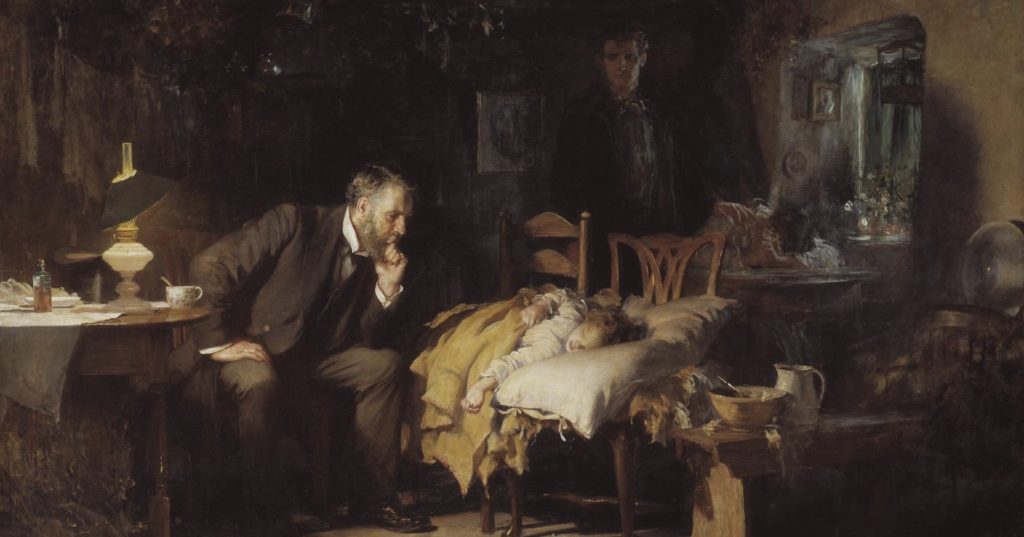 Medicine
Medicine
Doctor’s Diary: Jack of All Trades


Editor’s note: Dr. Simmons is the author most recently of Are We Here to Re-Create Ourselves? He is a Fellow with Discovery Institute’s Center for Science & Culture.
Changes in the world of medicine strongly show that a master architect has been at work. This is evident just in the training of doctors.
At the time of the U.S. Civil War, it took two years of training to become a physician and surgeon. This supposedly covered everything one would ever need to know. When I graduated from medical school, a little more than a hundred years later, basic medical training required seven years. Those instructions, so they thought, covered almost everything one needed to know. Nowadays, a general practitioner might need 11 years and becoming an ultra-specialist might take 16 years. Plus, there’s a lifetime of learning to follow.
Why Is That?
It’s not because the human body has been changing. New diseases are relatively rare, bones break in the same ways, a strep throat is, for the most part, a strep throat, and babies still take nine months. One answer is that we have discovered so much more information and we now have many more options to treat and prevent a host of maladies. Today’s practice of medicine may seem overwhelming to a non-professional, but many professionals think we’ve only chipped away at the tip of a huge iceberg. Fast forward a hundred years and our therapies will surely be obsolete, maybe even appearing barbaric.
Since the 1800s, general practice has birthed the specialty of internal medicine which now has been divided into general medicine, geriatrics, adolescent medicine, cardiology (heart), pulmonary (lungs), hematology (blood), oncology (cancer), endocrinology (thyroid and other glands), immunology (fighting infections) and nephrology (kidneys), just to name a few. Orthopedics has progressed from fixing fractures and sprains to sub-specialties for the upper extremities, the lower extremities, the ankles/feet, the wrists/hands, the back, sports medicine, and rehabilitation. One wonders if there might eventually be a specialist trained in everything-thumb or simply eyelids.
Specialization may have partly been prompted by free market competition, rising scholastic costs, and bureaucratic expectations, but the main impetus, by far, was the increasing realization that the body is much more complex than originally understood. Diseases and injuries require many more years to understand. The number of pharmaceuticals has increased a hundred fold. Care is much more than a simple house-call with a black bag. The black bag is now an emergency room or urgent care where there is a whole pharmacy, a cast room, surgical trays of instruments, and a plethora of cabinets and closets as well as nurses, medical assistants, radiology techs, IV techs, EKG techs, orderlies, and security.
Complexities Within Complexities
The human body may be as complicated as the stars above and it gets more incredible when one gets down to the level of the electron microscope. There are complexities within complexities within complexities as well as controls (feedback loops) over controls over controls. To simply clot off a wound, two major systems (pathways) have scores of steps that must happen simultaneously, almost instantly, in the right place, in the right concentrations. Meanwhile, another confining system, per the blueprint, keeps the clotting process from spreading to the rest of the body. Every step is monitored. Another example, among many, are the thyroid hormones T4 and T3. They are made in the thyroid gland which is controlled by TSH from the hypothalamus, which is controlled by TRH from the brain, which is controlled by an unclear mechanism deep in the brain.
The intelligence that designed us is a master architect. Instructions are written in a DNA and RNA, the biological language. We are mathematically and chemically precisely tuned down to the “curves in a paperclip on a desk.” The color of one’s eyes, the shapes of one’s nose, and any dimples are found within this twisted language. In a sense, our bodies are also sculpted by a master sculptor. And, painted by a master painter.
How the Blueprints Were Drawn Up
Just how our blueprints were drawn up is far beyond our understanding. Note that the human body is made up of 75 trillion cells. Many of these cells have different assignments and most produce offspring that have the same blueprints. Each nucleus has hundreds of thousands of genetic instructions. Some instructions dictate the production of thousands of different proteins that resemble skeins of multicolored wool with a host of electronic ornaments.
Our designer must also be a master programmer. We have about 35 trillion cells in our brains which by all accounts is a biological computer. These cells all talk to one another in electrical and chemical codes; some of this changes with maturation and aging. Conversations last tiny increments of seconds. Millions of cells communicate with each other at the same time as millions of others modulate, and others carry out the orders or instructions. Sometimes, billions of nerve cells combine to do simple chores. Every emotion, memory, interaction, prayer, and thought process requires new and past programming.
Everything about us points to intelligent design, intelligent purpose, intelligent foresight, and intelligent engineering.
Image: The Doctor (1891), by Luke Fildes, via Wikimedia Commons.
